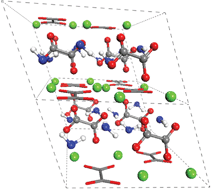Density functional theory and interatomic potential study of structural, mechanical and surface properties of calcium oxalate materials†
Abstract
The structural and elastic properties of anhydrous

* Corresponding authors
a
Department of Chemistry, University College London, 20 Gordon Street, London, WC1H 0AJ, United Kingdom
E-mail:
d.tommaso@ucl.ac.uk
Fax: +44 (0)20 7679 7463
Tel: +44 (0)20 7679 7465
The structural and elastic properties of anhydrous

 Please wait while we load your content...
Something went wrong. Try again?
Please wait while we load your content...
Something went wrong. Try again?
D. D. Tommaso, S. E. R. Hernández, Z. Du and N. H. D. Leeuw, RSC Adv., 2012, 2, 4664 DOI: 10.1039/C2RA00832G
To request permission to reproduce material from this article, please go to the Copyright Clearance Center request page.
If you are an author contributing to an RSC publication, you do not need to request permission provided correct acknowledgement is given.
If you are the author of this article, you do not need to request permission to reproduce figures and diagrams provided correct acknowledgement is given. If you want to reproduce the whole article in a third-party publication (excluding your thesis/dissertation for which permission is not required) please go to the Copyright Clearance Center request page.
Read more about how to correctly acknowledge RSC content.
 Fetching data from CrossRef.
Fetching data from CrossRef.
This may take some time to load.
Loading related content
